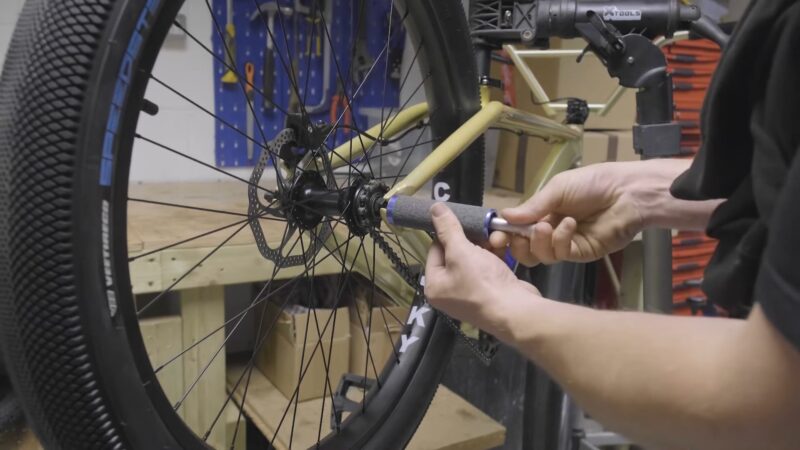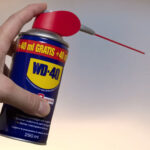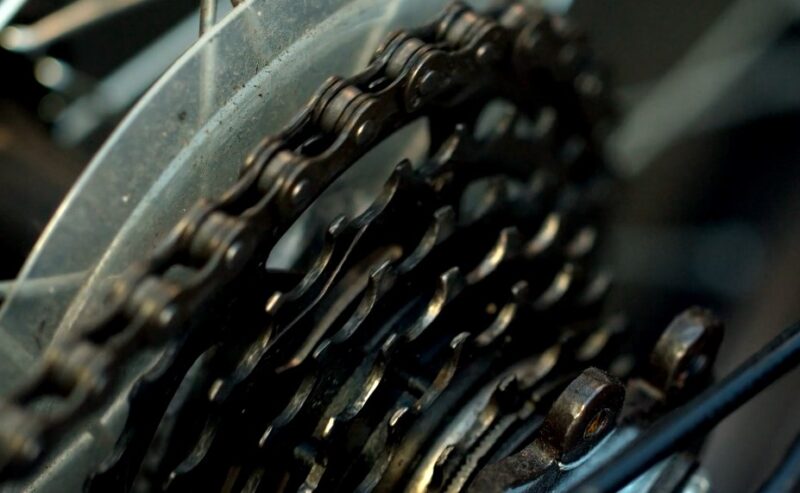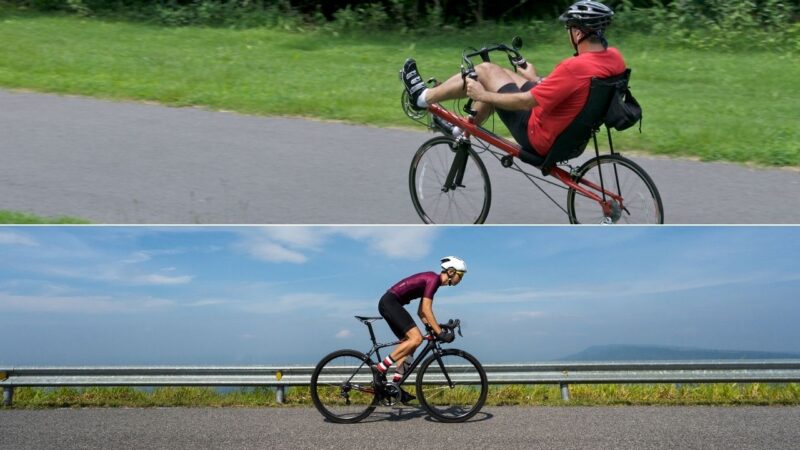
Many bikers wonder if they can add pegs to their mountain bikes. BMX bikes often use pegs for tricks and stunts, but mountain bikes are designed differently.
This guide will explain how to add pegs to a mountain bike, what you need to know before doing it, and the pros and cons.
Key Takeaways
- You can install pegs on a mountain bike, but it requires replacing quick-release skewers with bolt-on axles and ensuring your bike’s frame and fork can handle the added stress.
- Installing pegs can damage your bike’s frame and fork, void the warranty, and increase the risk of flat tires and accidents.
Tools You Need
| Allen Wrench | Tighten pegs to axles |
| Socket Wrench | Remove nuts and bolts |
| Grease or Anti-Seize Compound | Prevent bolts from seizing |
| Replacement Axles | Ensure compatibility for pegs |

To install pegs on your mountain bike, you need specific tools to ensure a secure and proper installation. Using the right tools prevents damage to your bike and ensures the pegs stay in place during use. Here’s a list of essential tools:
- Allen Wrench: This tool is crucial for tightening the pegs to the axles. It helps in securing the pegs firmly, which is essential for safety.
- Socket Wrench: Use a socket wrench to remove the existing nuts and bolts from your bike’s axles. This step is necessary for replacing them with longer, bolt-on axles.
- Grease or Anti-Seize Compound: Applying a small amount of grease or anti-seize compound on the threads of the peg bolts prevents them from seizing over time. This makes it easier to adjust or remove the pegs when needed.
- Replacement Axles: Most mountain bikes come with quick-release skewers that are not suitable for pegs. You will need to replace these with long bolt-on axles to ensure the pegs are securely attached.
Preparing the Bike

Before installing pegs on your mountain bike, you need to prepare it properly to ensure a secure fit. Start by cleaning the areas where the pegs will be attached. Dirt or debris can prevent the pegs from attaching securely. Use a clean cloth and some bike cleaner to wipe down the axles and dropouts.
Check your bike’s current axle setup. Most mountain bikes have quick-release skewers, which are not suitable for pegs. You will need to replace these with long bolt-on axles. If you are unsure about the type of axles your bike has, consult the bike’s manual or ask a bike mechanic.
Make sure you have all the necessary tools ready. Gather your Allen wrench, socket wrench, and any replacement axles you might need. Having everything prepared beforehand will make the installation process smoother.
Installing the Axles

To install the axles, start by removing the current quick-release skewers. Use a socket wrench to unscrew the nuts holding the skewers in place. Carefully slide the skewers out of the wheel hubs.
Next, insert the new bolt-on axles into the hubs. Ensure they are the correct length and type for your bike. Secure the axles in place by tightening the nuts with your socket wrench. Make sure the axles are firmly in place, as they will support the weight and stress of the pegs.
If your bike requires any adapters or additional hardware to fit the new axles, install these now. Check the alignment of the axles to make sure they are straight and properly positioned. Proper axle installation is crucial for the safety and functionality of your pegs.
Attaching the Pegs

Once the axles are installed, you can attach the pegs. Slide the pegs onto the axles until they are flush against the fork dropout or rear dropout. Use your Allen wrench to tighten the peg bolts, securing the pegs to the axles. Apply a small amount of grease or anti-seize compound to the threads of the bolts to prevent them from seizing over time.
Make sure the pegs are aligned parallel to each other and perpendicular to the ground. Proper alignment ensures stability and reduces wear and tear on the pegs and bike frame. After tightening the bolts, check that the pegs are secure and do not wobble.
Regularly check the tightness of the peg bolts after installation. Re-tighten them as needed to maintain a secure connection between the pegs and the axles. Properly attached pegs will enhance your riding experience and ensure safety while performing tricks or carrying a passenger.
Pros and Cons of Using Pegs on a Mountain Bike
| Pros | Cons |
|---|---|
| Improved simple maneuvers | Damage to frame and fork |
| Rest for legs | Voided warranty |
| Room for a passenger | Extra weight and flat tires |
| Additional tricks | Safety concerns |
| Fun and versatility | Social backlash |

Pros of Using Pegs on a Mountain Bike
- Improved Simple Maneuvers: Pegs can make performing simple tricks easier, such as hops and spins. They provide an extra foothold which can enhance your control during maneuvers.
- Rest for Legs: On long rides, pegs can offer a place to rest your legs. Standing on the pegs allows your feet to take a break from constant pedaling.
- Room for a Passenger: Pegs can provide a place for a friend to stand and ride along with you. This can be fun for short rides, especially for kids.
- Additional Tricks: With pegs, you can try new stunts that are typically reserved for BMX bikes, adding a new dimension to your riding experience.
- Fun and Versatility: Pegs add a fun element to your bike, allowing for more varied and versatile riding experiences.
Cons of Using Pegs on a Mountain Bike
- Damage to Frame and Fork: Mountain bikes are not designed to handle the lateral stress that pegs introduce. This can lead to dents, cracks, or bending of the frame and fork, especially with aluminum or carbon fiber frames.
- Voided Warranty: Most bike manufacturers will void the warranty if pegs are installed. This means you will have to cover any repair costs out of pocket if something goes wrong.
- Extra Weight and Flat Tires: The additional weight of pegs can increase the risk of flat tires and make the bike harder to control, especially on rough terrains.
- Safety Concerns: Improper installation or use of pegs can lead to accidents. Pegs can snag on obstacles, causing crashes, especially on narrow trails.
- Social Backlash: Some mountain biking communities might not appreciate the addition of pegs, as they can be seen as inappropriate for trail riding and may cause damage to trails.
FAQs
Can pegs be used on both the front and rear axles of a mountain bike?
Yes, pegs can be installed on both the front and rear axles of a mountain bike. However, it’s important to ensure that both axles are long bolt-on types and that the bike frame and fork can handle the added stress. Proper installation and alignment are crucial for safety and performance.
Are there specific types of pegs recommended for mountain bikes?
Steel and aluminum pegs are generally recommended for mountain bikes due to their durability. Plastic pegs can be used but may wear out faster. Ensure that the pegs are compatible with the type of axle you have installed on your bike.
Can I perform BMX tricks on a mountain bike with pegs?
While it is possible to perform some simple tricks on a mountain bike with pegs, it is not advisable to attempt complex BMX tricks. Mountain bikes are not designed for the high-impact stress of BMX stunts, which can damage the frame and fork.
What is the impact of pegs on mountain bike performance on rough terrains?
Pegs can affect the handling and balance of a mountain bike on rough terrains. The added weight and altered weight distribution can make it harder to control the bike, especially on steep or technical trails. Riders should practice and adjust their techniques to compensate for these changes.
Can I remove the pegs if I no longer want to use them?
Yes, pegs can be removed if you decide not to use them anymore. Ensure that the axle nuts are properly tightened after removing the pegs to maintain the bike’s stability and safety. Regularly check the axles and frame for any signs of damage that may have occurred while the pegs were installed.
Final Thoughts
Putting pegs on a mountain bike is possible, but it comes with various challenges and risks. It requires replacing quick-release skewers with bolt-on axles and ensuring your bike can handle the additional stress.
While pegs can add fun and new maneuvers to your riding experience, they can also damage your bike and void its warranty. Weigh the pros and cons carefully, and if you decide to proceed, make sure to install and maintain them properly.
Related Posts:
- Can You Put Drop Bars on Any Bike? (Hybrid, Mountain, Etc.)
- How to Inflate Road Bike Tires - A Step-by-Step Guide
- Can Bike Tires Go Flat Just From Sitting Unused? (Explained)
- Can You Use WD40 on a Bike Chain (What to Know First)
- Do Bike Pedals Need to be Greased (Explained for Beginners)
- Do Bicycle Tires Expire or Go Bad? (Shelf Life Explained)








